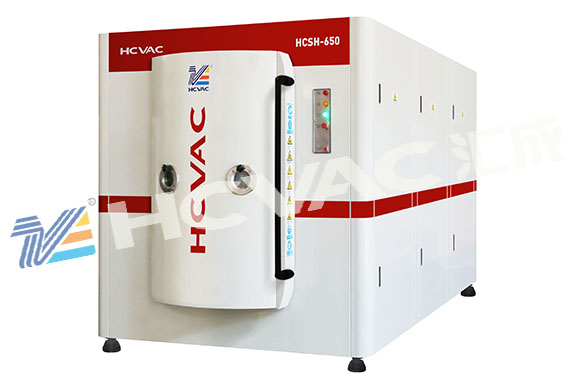There are two ways to coat functional films, CVD method and PVD method. Today, I will introduce to you the vacuum coating editor. The method of coating functional films by vacuum coating machine is PVD method. I hope it can help. To everyone:

The PVD method uses physical forms such as evaporation or sputtering to remove the material from the target source, and then deposit these energy-carrying vapor ions on the surface of the substrate or part through a vacuum or semi-vacuum space to form a film. The vapor-phase reaction of vaporized or sputtered metal atoms results in the deposition of the desired compound on the tool surface. PVD coatings can be coated with titanium nitride, titanium carbonitride, aluminum titanium nitride, and carbides and nitrides of various refractory metals.
At present, commonly used PvD methods include low voltage electron beam evaporation (LVEE) method, cathode electron arc deposition (CAD), transistor high voltage electron beam evaporation (THVEE), unbalanced magnetron sputtering (UMS), ion beam assisted deposition method (IAD) and dynamic ion beam mixing (DIM). The main difference is that the vaporization method of the deposited material and the method of generating the plasma are different, which makes the film formation speed and film quality different.
PVD technology is mainly used in the surface treatment of solid carbide cutting tools and high-speed tool steel cutting tools.
Compared with the CVD method, the PVD method has the following advantages:
The coating temperature (300~500°C) is lower than the tempering temperature of high-speed tool steel, so it will not damage the hardness and dimensional accuracy of high-speed tool steel tools, and heat treatment is no longer required after coating. The effective thickness of the coating is only a few microns, so the original precision of the tool can be guaranteed, and it is suitable for coating high-precision tools. The purity of the coating is high, the density is good, the combination of the coating and the substrate is firm, and the performance of the coating is not affected by the material of the substrate. The coating is uniform, and there is no thickening or rounding at the cutting edge and arc, so even complex tools can be uniformly coated. There is no decarburization phase, and there is no brittle cracking of the coating caused by chlorine corrosion and hydrogen embrittlement deformation in the CVD method, and the strength of the coated blade is high. The working process is clean, pollution-free and pollution-free.
At present, the PVD technology of
vacuum coating machine not only improves the bonding strength of the film and the tool base material, but also the coating composition has been developed from a single coating to TiC, TiCN, ZrN, CrN, MoS2, TIAIN, TiAICN, TiN-AIN, CN, etc. A kind of multi-component composite coating, and due to the emergence of nano-scale coating, the quality of PVD coated tools has made a new breakthrough. This thin film coating not only has high bonding strength, hardness close to CBN, good oxidation resistance, and can effectively The shape and precision of the cutting edge of the precision tool are controlled accurately, and the machining accuracy is not inferior to that of the uncoated tool during high-precision machining.



